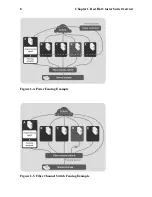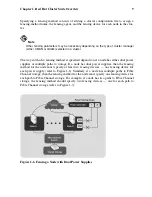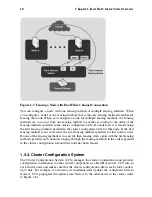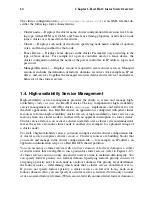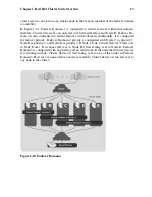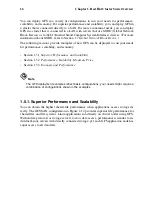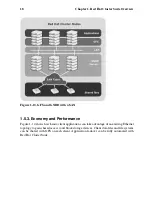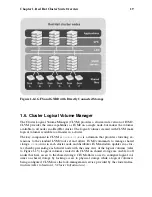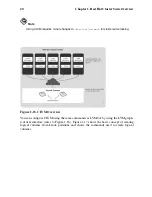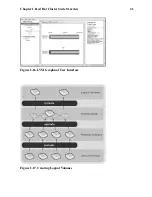
12
Chapter 1. Red Hat Cluster Suite Overview
The cluster configuration file (
/etc/cluster/cluster.conf
) is an XML file that de-
scribes the following cluster characteristics:
•
Cluster name — Displays the cluster name, cluster configuration file revision level, lock-
ing type (either DLM or GULM), and basic fence timing properties used when a node
joins a cluster or is fenced from the cluster.
•
Cluster — Displays each node of the cluster, specifying node name, number of quorum
votes, and fencing method for that node.
•
Fence Device — Displays fence devices in the cluster. Parameters vary according to the
type of fence device. For example for a power controller used as a fence device, the
cluster configuration defines the name of the power controller, its IP address, login, and
password.
•
Managed Resources — Displays resources required to create cluster services. Managed
resources includes the definition of failover domains, resources (for example an IP ad-
dress), and services. Together the managed resources define cluster services and failover
behavior of the cluster services.
1.4. High-availability Service Management
High-availability service management provides the ability to create and manage high-
availability
cluster services
in a Red Hat cluster. The key component for high-availability
service management in a Red Hat cluster,
rgmanager
, implements cold failover for off-
the-shelf applications. In a Red Hat cluster, an application is configured with other cluster
resources to form a high-availability cluster service. A high-availability cluster service can
fail over from one cluster node to another with no apparent interruption to cluster clients.
Cluster-service failover can occur if a cluster node fails or if a cluster system administrator
moves the service from one cluster node to another (for example, for a planned outage of
a cluster node).
To create a high-availability service, you must configure it in the cluster configuration file.
A cluster service comprises cluster
resources
. Cluster resources are building blocks that
you create and manage in the cluster configuration file — for example, an IP address, an
application initialization script, or a Red Hat GFS shared partition.
You can associate a cluster service with a
failover domain
. A failover domain is a subset
of cluster nodes that are eligible to run a particular cluster service (refer to Figure 1-10).
A cluster service can run on only one cluster node at a time to maintain data integrity. You
can specify failover priority in a failover domain. Specifying failover priority consists of
assigning a priority level to each node in a failover domain. The priority level determines
the failover order — determining which node that a cluster service should fail over to.
If you do not specify failover priority, a cluster service can fail over to any node in its
failover domain. Also, you can specify if a cluster service is restricted to run only on nodes
of its associated failover domain. (When associated with an unrestricted failover domain, a
Summary of Contents for CLUSTER SUITE - FOR RHEL 4
Page 1: ...Red Hat Cluster Suite for RHEL 4 Overview ...
Page 4: ......
Page 10: ...vi About This Document ...
Page 47: ...Chapter 1 Red Hat Cluster Suite Overview 37 Figure 1 25 Cluster Configuration Structure ...
Page 62: ...52 Chapter 1 Red Hat Cluster Suite Overview ...
Page 72: ...62 Chapter 2 Red Hat Cluster Suite Component Summary ...











